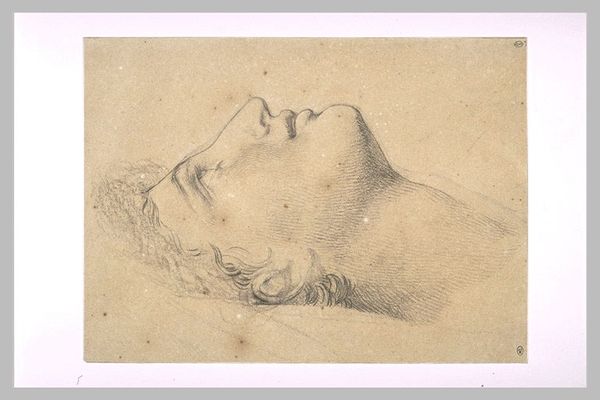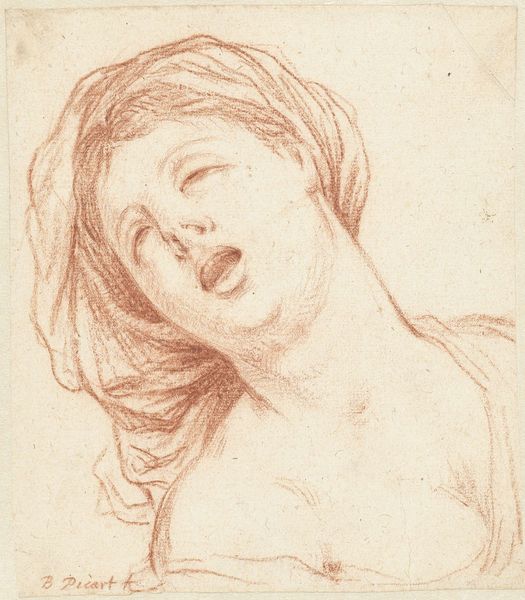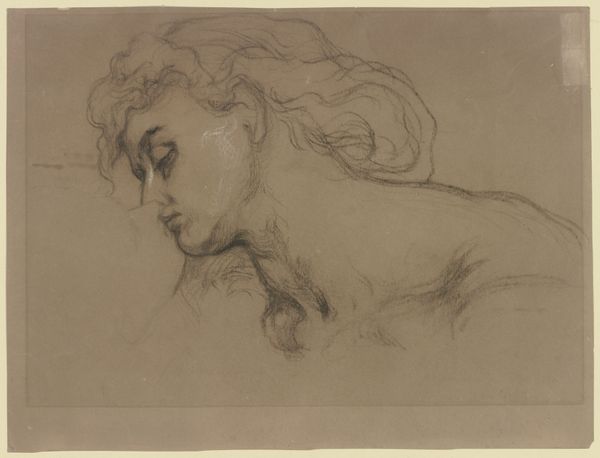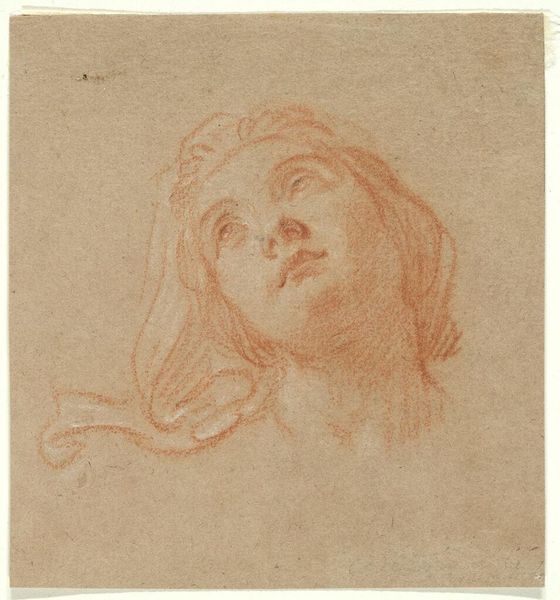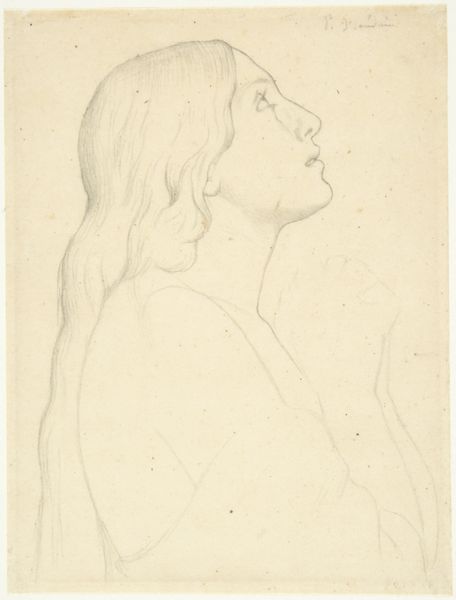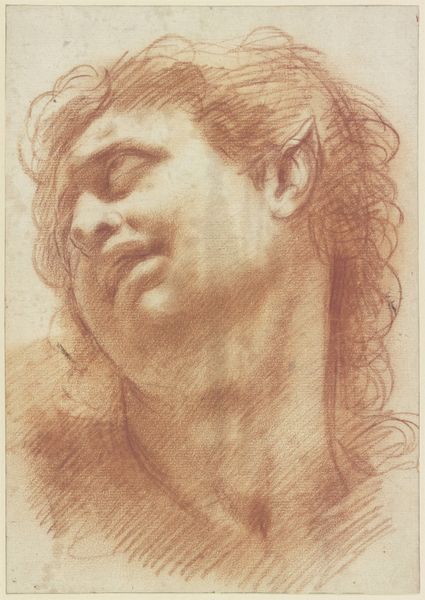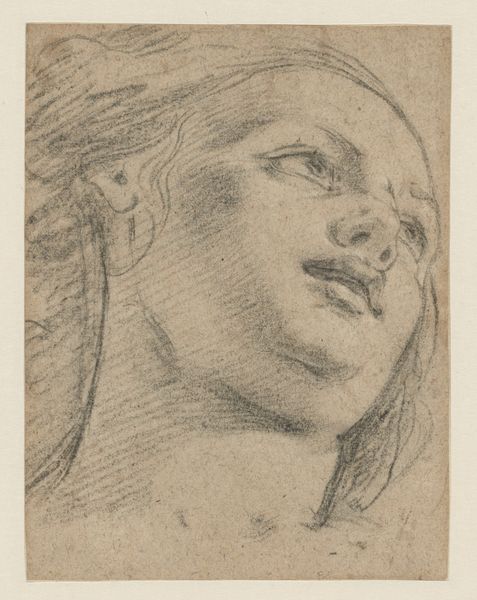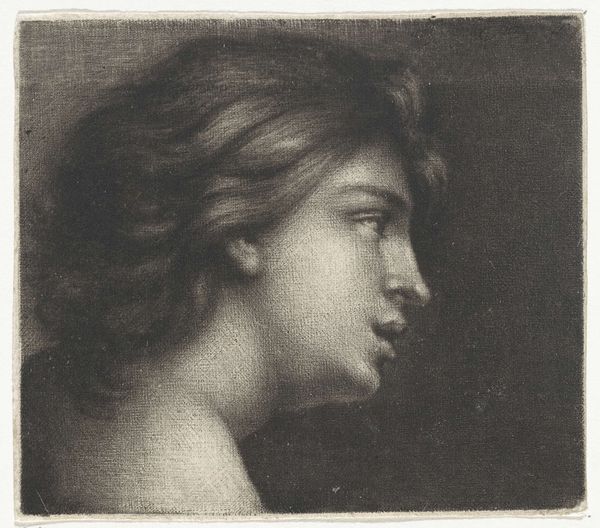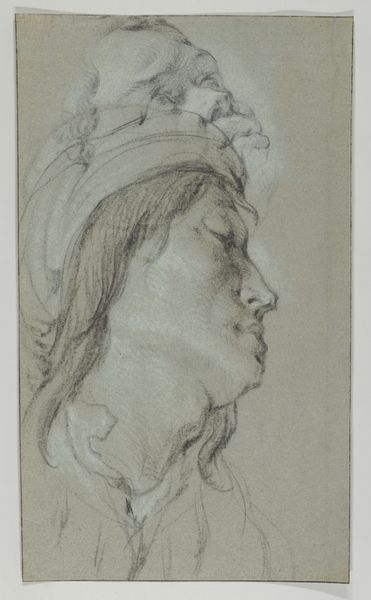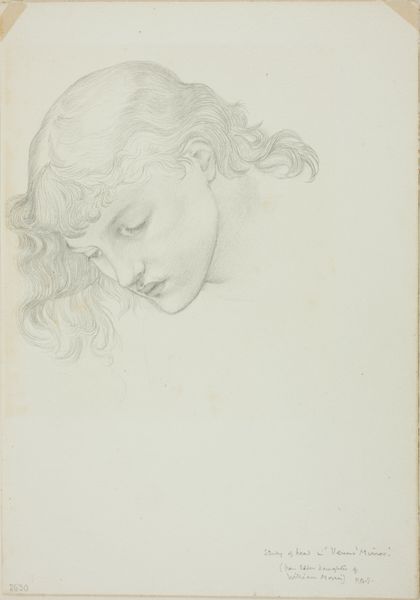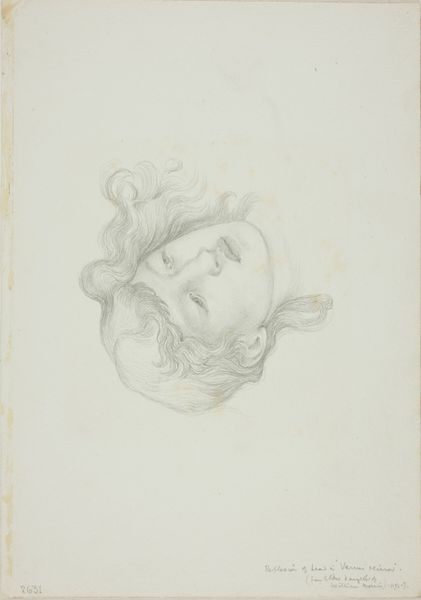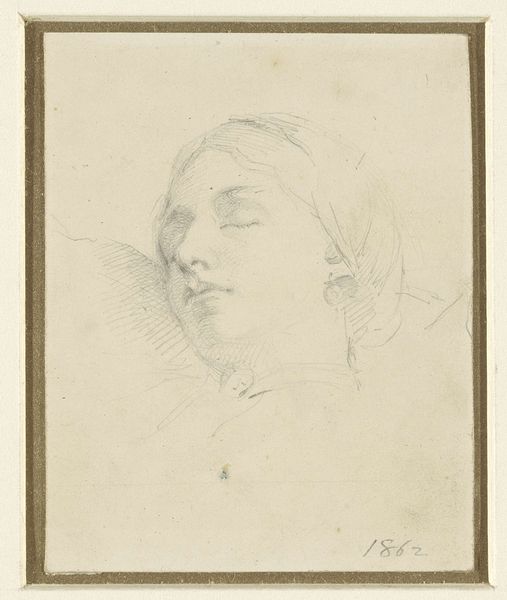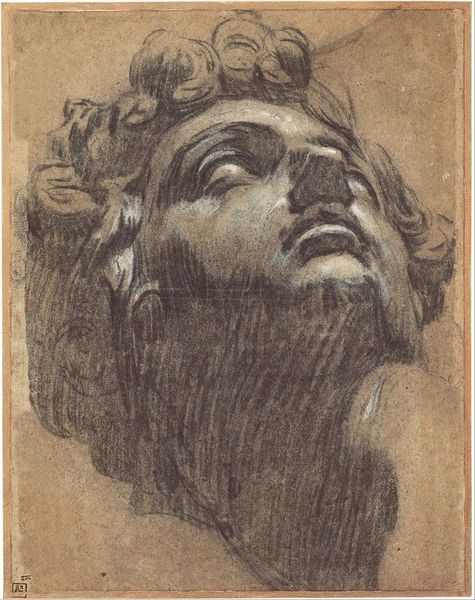
drawing, paper, pencil
#
portrait
#
drawing
#
charcoal drawing
#
figuration
#
paper
#
pencil drawing
#
pencil
#
line
#
academic-art
#
realism
Copyright: Public domain
Curator: Here we have "Young man head, in profile to the right," a drawing by Luc-Olivier Merson. The artwork, done in pencil and charcoal on paper, offers a striking portrayal of a young man's visage. Editor: He seems almost melancholic, gazing beyond us, lost in thought. There's a tenderness in the soft lines, especially around his mouth. Curator: The academic art style is definitely present here; the artist is focused on capturing anatomical precision, which was crucial at the time. Consider the context of its creation—art education during that era stressed rigorous study of form and figure. Editor: It speaks volumes about beauty standards of that time, doesn’t it? The young man has an almost ethereal, androgynous quality, something which, intersectionally, touches on shifting concepts around gender and identity during art movements within his lifetime. Is this idealized representation a reflection of broader social hierarchies? Who did that exclude? Curator: Certainly. Portraits often functioned as affirmations of status, beauty, and power, circulated within specific social and cultural circles. Merson was recognized by peers and became a member of the Academie des Beaux-Arts. The circulation of similar portrait styles further cements beauty norms and preferences through public exposure and influence. Editor: And his downward gaze reinforces certain societal positions – the objectified rather than the observer. This isn't simply a neutral depiction; it's a participation in constructing, potentially even perpetuating, ways of seeing and categorizing individuals, with clear emphasis on the "gaze." The very posture signifies volumes about assumed rights to scrutinize. Curator: An incisive reading, as always! Viewing through this lens of social critique highlights the crucial function art had. Editor: Ultimately, reflecting on this drawing offers an opportunity to reassess accepted notions about portraits, identity, and visual power. Curator: It provides the historical perspective so crucial to re-examine narratives in our present.
Comments
No comments
Be the first to comment and join the conversation on the ultimate creative platform.
